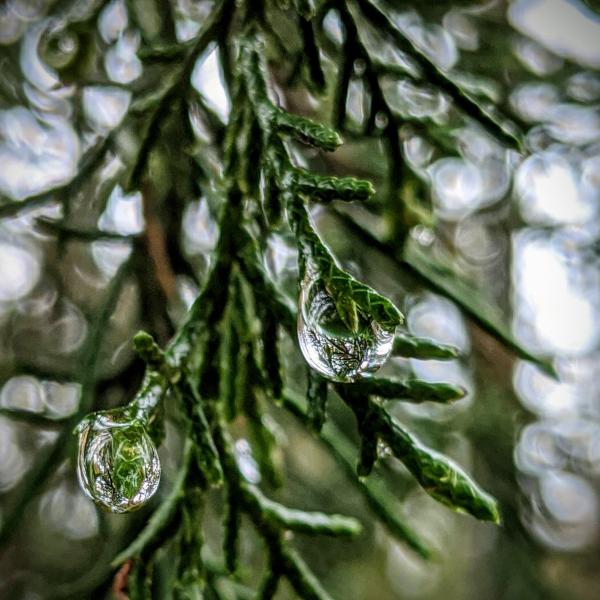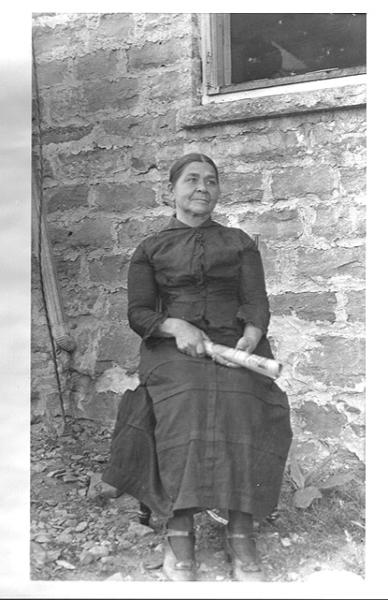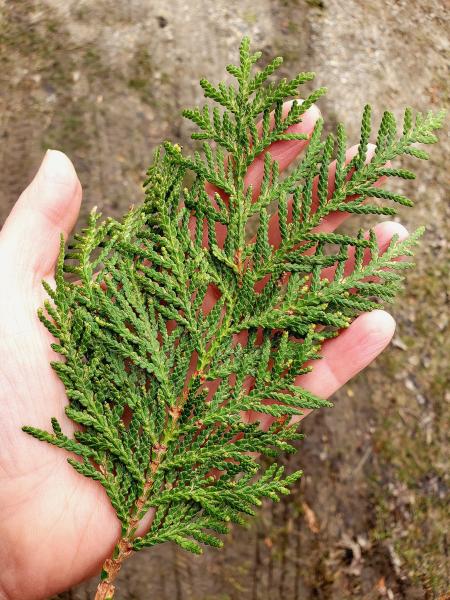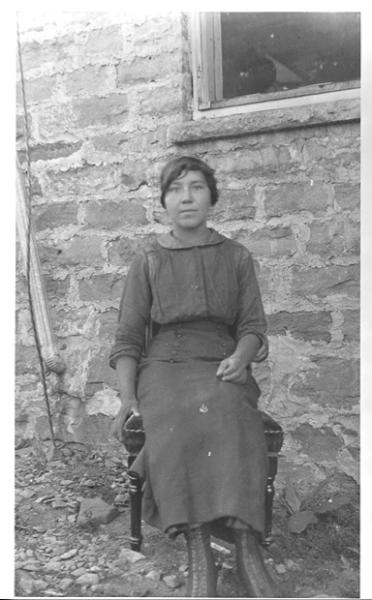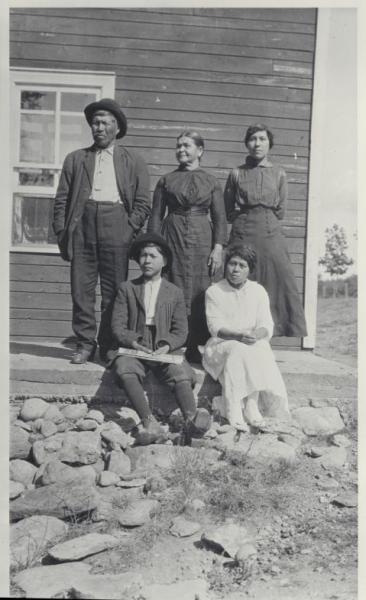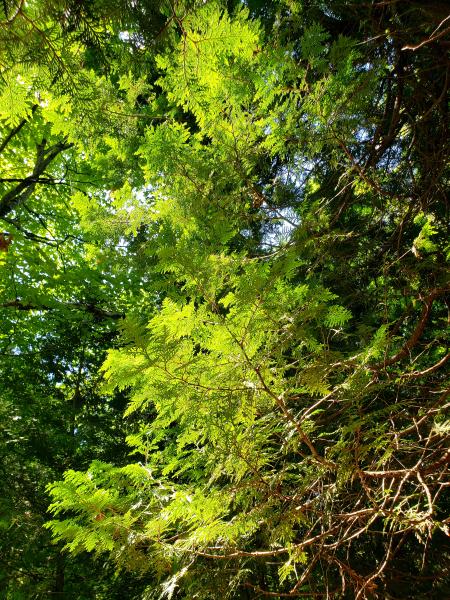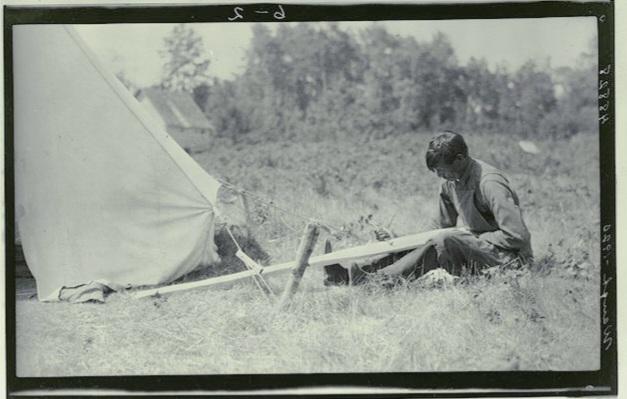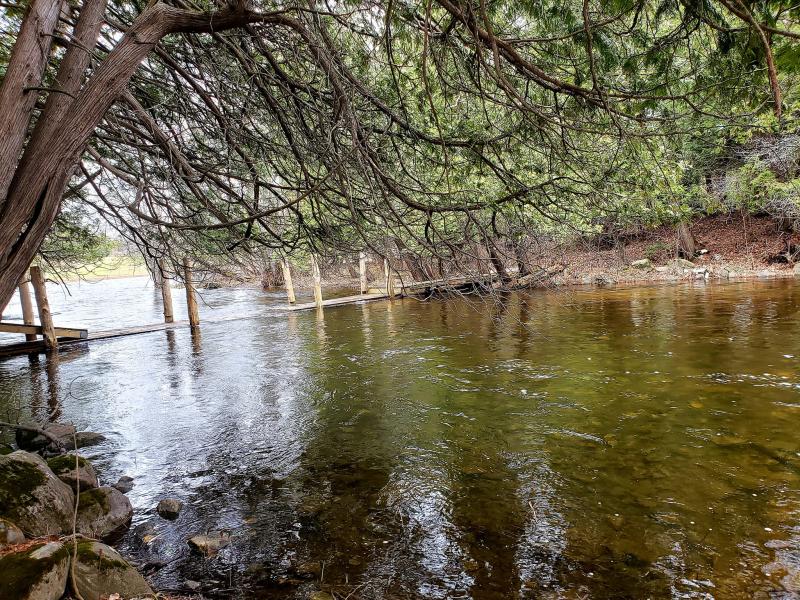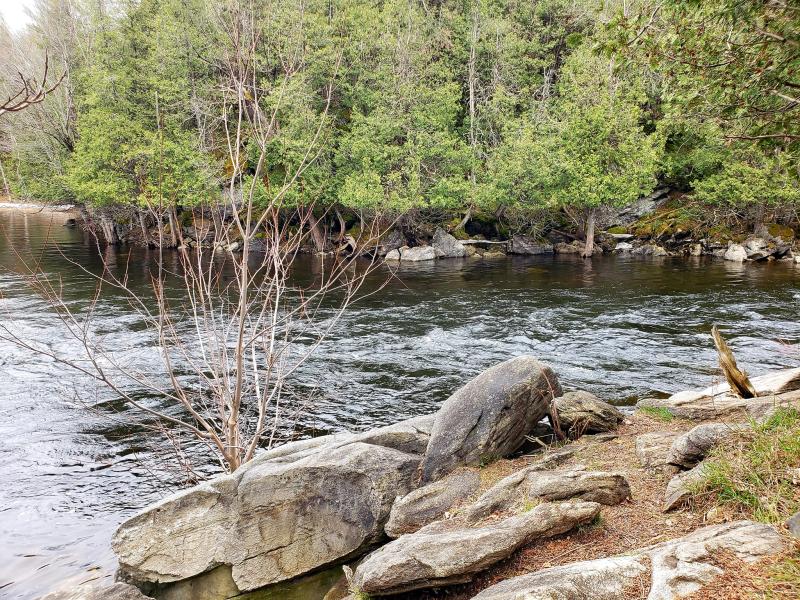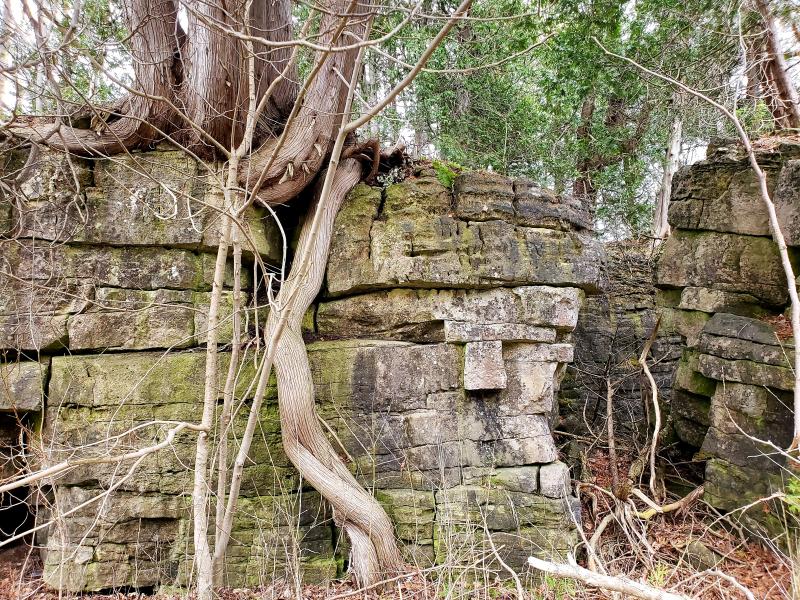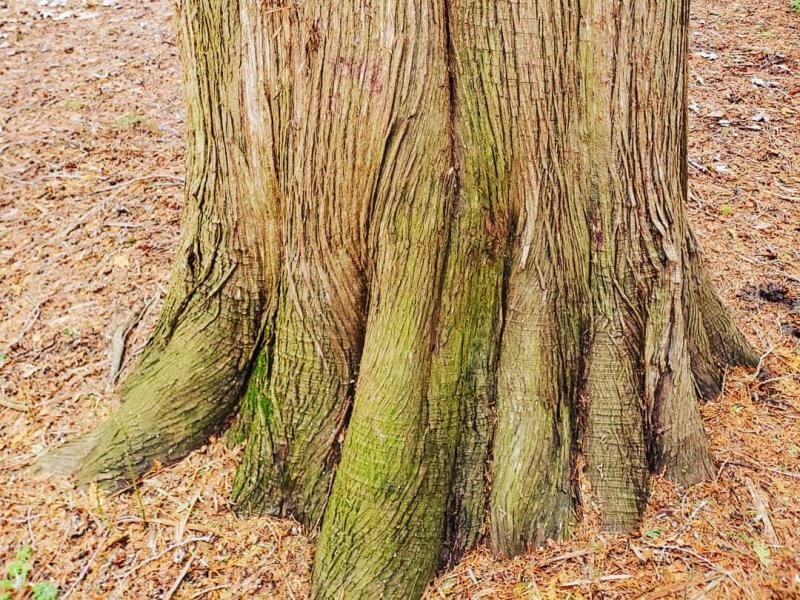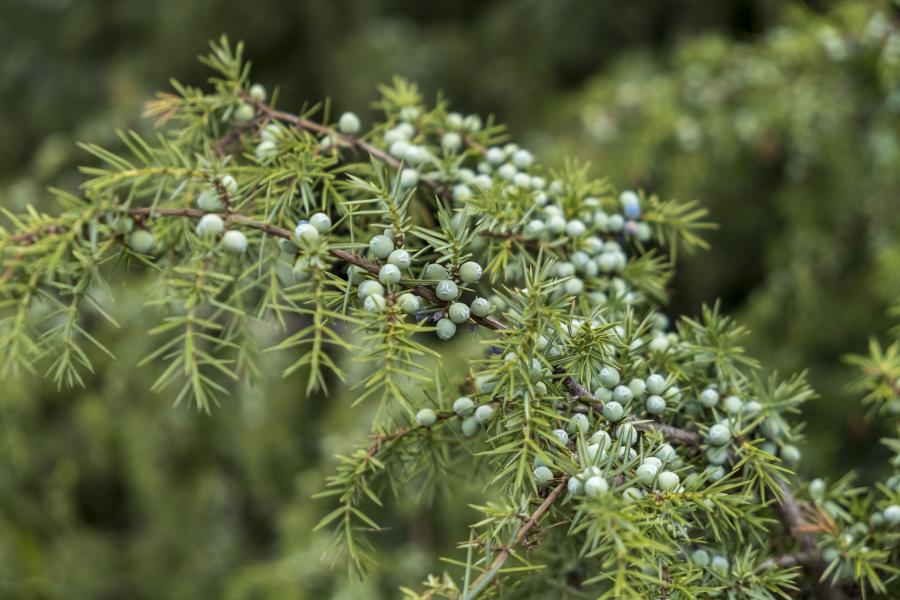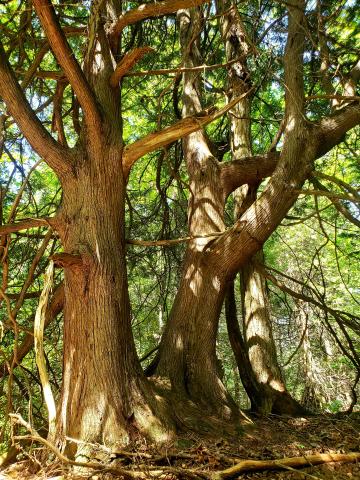
Names and Their Meanings
White Cedar - Thuja occidentalis
Eastern Red Cedar - Juniperus virginiana
Juniper - Juniperus communis
White Cedar
Description
A small tree with a single to multiple stems growing up to 50 feet tall. The bark is red brown and peels in long fibrous strips. The leaves are evergreen, composed of flat scales that form fan shaped sprays. Cedar grows in cool, moist, calcareous, neutral to basic soils, and occupies multiple habitats including swamps, shores of rivers and lakes, upland mixed to coniferous forests, cliffs and talus. Cedar is the iconic tree of the Niagara Escarpment, as it thrives from the mineral composition of the dolomitic limestone, also known as dolostone. Cedar trees are shade tolerant, and part of mid to late successional forests, including old growth forests. They are also early successional species on cliffs and talus slopes.
Conservation Status
S5 (Secure) in Ontario, New York, and throughout its Northeastern range, yet vulnerable, imperilled, and critically imperilled throughout the southernmost range of its habitat.
Eastern Red Cedar
Description
Cedar taxonomy can be confusing, for one reason because some of the trees that are commonly called cedar, are actually junipers – as is the case with the Eastern red cedar (Juniperus virginiana). Red cedar is native to and broadly distributed throughout the Eastern half of North America. It is an evergreen tree that grows taller than white cedar – up to 100 feet tall. It is also very long-lived, with some of its oldest members documented at around 1000 years old. It tends to have a single trunk that spreads at the bottom and tapers, with a pyramidal crown when young that, when more mature, may become conical, round, or asymmetrical/ flattened. To further confuse matters, the outer bark of red cedar is a light gray-brown, that also peels in strips. Red cedar’s name describes the beautiful reds that characterize its interior wood. The branches can be pendulous, yet ascending. Leaves are green and needle-like when new, turning to scale-like when more mature. The leaves turn a reddish-bronze color in the winter. Cedar and juniper cones are “fused” so that they appear to be berries. Red cedar also grows on bluffs, and in open, rocky woods, pastures and old fields. These cedars grow aggressively in prairies, and are managed well by fire suppression and prescribed burns. Cedar waxwings help cedar seeds germinate. Red cedar can be an early successional species, which means that it can help transform a striped landscape back to forest; the opposite is also true: if you don’t manage prairie or savannah landscapes with fire, then red cedars may turn it into a forest.
Conservation Status
S5 (Secure) in Ontario, and throughout areas for which there are data
Juniper
Description
Common Juniper is a slow-growing, low shrub that is native to the circumpolar North, and spreads wider than it grows tall. Unlike the scale-like leaves of red and white cedars, this species has aromatic, prickly, needle-like leaves that grow arranged in whorls of three, outward from the stem. This shrub is mat-forming, and tolerates very cold temperatures and a wide range of soils, including poor, stony or sandy soils. Common juniper is dioecious, with separate male and female plants. Small yellowish flowers in the spring become berry-like fused cones that ripen to a waxy bluish-black color in the fall. Juniper is a shrub that can tolerate the harsh temperatures, wind and full sun of rocky steppes, mountain tops, exposed slopes, and the taiga, providing habitat for small mammals and birds. In more northerly and elevated locations, it becomes dwarfed and shaped by the wind.
Conservation Status
S5 (Secure) in Ontario and the entire North of North America; of concern in the southeast and lower Midwest of North America
Uses and harvesting protocols
Cedars are cultural keystone trees for Anishinaabe. They are one of the four sacred medicines, used for their high content in vitamin C, and antiviral and antibacterial properties. Cedar tea is enjoyed by Indigenous peoples across North America. Alyssa General notes that the stronger the tea, the less of it people should consume, because too much is easily toxic. Cedar tea is never safe for consumption during pregnancy. Cedar tea is credited to have cured Jacques Cartier and his crew who were suffering from scurvy when they arrived in the Iroquoian village Stadacona in the early 1500s. Donnacona, one of the chiefs there, gave the newcomers cedar tea to nourish them and heal their scurvy, enabling the explorers to survive and stay for a time.
Cedar baths are a great healer for stress and colds. Cedar is a sacred plant for prayer, used in sweats. It is also widely regarded as a spiritual protection medicine, in baths, lodges, houses, even the leaves in soles of shoes. Alyssa General notes that often, species that are well-regarded for spiritual protection qualities, are also antiviral and antibacterial. Tehahenteh Miller notes that white cedar is used in ceremony with Onkwehonwe tobacco (Nicotiana rustica); it is traditionally hung above the door and used with sage to get bad energy out of the house. He notes not to drink too much of it, as it’s a blood thinner.
Red cedar is a species that the entire tree is used, although it is most popularly known for its value as a rot-resistant, aromatic timber. Cedar poles were used to frame longhouses and for other construction purposes; cedar is used to make chests, to line closets, to make cradleboards, paddles, and even pencils. Bark of white and red cedar was historically used to make cordage, and woven into mats to line floors and graves. Cedar bark is used for vessel and basket making; in bag-making to protect leather clothes and boots from insects; and for regalia. Cedar is used in mask-making, as well.
Alyssa General notes that when they start to shed the outer hulls of berries, cedar creates a tuft that is a great fire-starter. Ojibway ethnobotanist Scott Herron writes that both cedars and common juniper are used among Anishinaabe as medicines, ceremonial plants, and for craft and utility. Cedar is an ingredient in kinnikinnick. Its oil is used to anoint little children and as a hair oil, and as an ingredient in salves along with bear grease or other fats, as a chest rub for respiratory concerns.
Juniper berries have been used for a long time as a flavoring for gin, and to remove the “gamey” flavor from venison when cooking it. In Waugh’s 1916 research in Ojibwe and Odawa communities, he recorded either from a Mrs. Dumoulin or the Mary and Annie Wakegizik, that juniper gum (sap) can be mixed with gunpowder and sweet flag and applied on the infection for toothache. Elsewhere, juniper berries are known as medicine for kidney infections and kidney health, but again, the tea must not be too strong, and not too much tea should be drunk, otherwise it will have the opposite effect on the kidneys.
